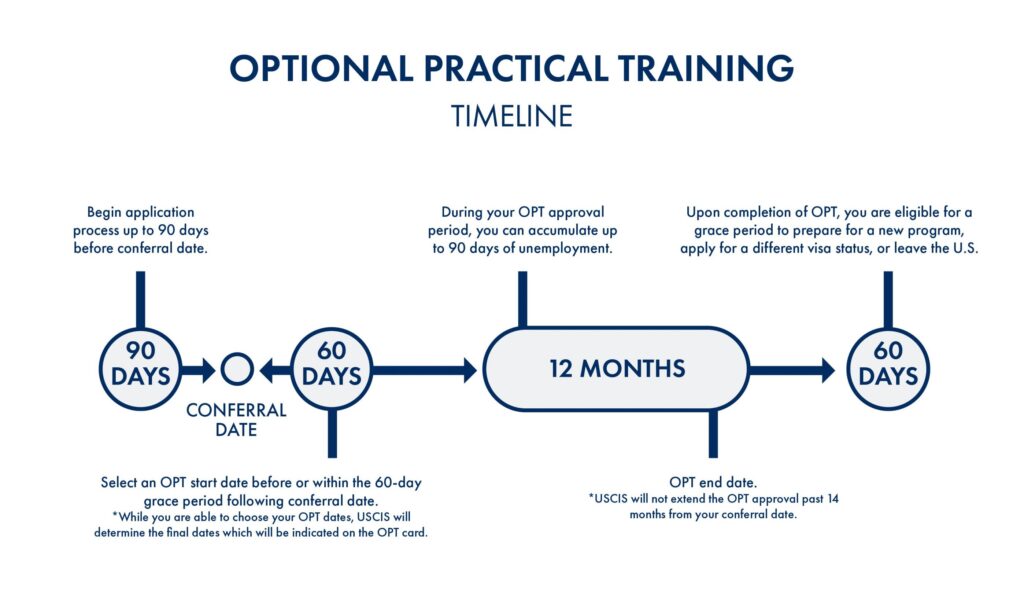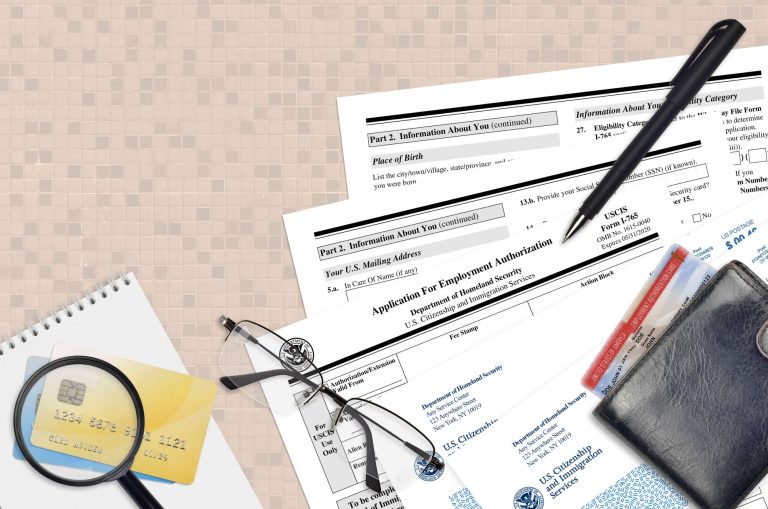Navigating the United States immigration system can be complex, especially for international students seeking to gain work experience during or after their studies. Two critical programs facilitating this are Curricular Practical Training (CPT) and Optional Practical Training (OPT). Understanding the differences between these programs and the application process is essential for students planning to work in the U.S. This article will explore CPT and OPT, outlining their distinctions, eligibility criteria, and application procedures.
What Is Curricular Practical Training (CPT)?
Curricular Practical Training (CPT) is a type of work authorization for international students on F-1 visas. It allows these students to gain practical work experience in their field of study through employment, internships, or cooperative education programs. The key aspect of CPT is that the work experience must be an integral part of the student’s curriculum or academic program. CPT can be full time and not limited by a weekly 20 hours work limit.
Eligibility for CPT
To be eligible for CPT, students must:
- Be enrolled in an educational institution in the U.S. on a full-time basis for at least one academic year.
- Have a declared major and the proposed work must be directly related to their field of study.
- Receive a job offer before applying for CPT.
How to Apply for CPT
The application process for CPT involves several steps:
- Secure a Job Offer: Before applying for CPT, students must have a job offer that is related to their field of study.
- Consult Your School’s International Student Office: The international student office or a designated school official (DSO) will provide guidance on the CPT application process specific to your institution.
- Submit Required Documentation: This typically includes a job offer letter, a completed CPT application form, and your academic advisor’s endorsement.
- Approval and Authorization: If approved, the DSO will update your I-20 form to include the CPT authorization.
What Is Optional Practical Training (OPT)?
Optional Practical Training (OPT) is a form of temporary employment authorization for F-1 students, allowing them to work in the U.S. in their field of study either during their studies (pre-completion OPT) or after graduating (post-completion OPT). Unlike CPT, OPT does not require employment to be an integral part of the student’s curriculum. However, you can apply for a 12-month OPT at each education level. Only STEM (science, technology, engineering, or math) students will be eligible for a 24-month STEM OPT extension. In the meantime, you need to transit into an H1B visa or find a pathway to be a permanent resident.
Eligibility for OPT
To be eligible for OPT, students must:
- Be enrolled in an accredited college or university in the U.S. on a full-time basis for at least one full academic year.
- Intend to work in a job directly related to their major area of study.
- Must be recommended by Designated School Official (DSO).

How to Apply for OPT
The application process for OPT is more standardized than for CPT and involves the following steps:
- Request an OPT Recommendation: Consult your school’s international student office to request an OPT recommendation. Your DSO will then endorse your I-20 form and provide you with a new one indicating the recommendation for OPT.
- Complete Form I-765: Fill out the Application for Employment Authorization (Form I-765) and prepare the necessary supporting documents, including photos and the application fee.
- Submit Your Application to USCIS: Mail your completed Form I-765, the fee, and all required documents to the appropriate U.S. Citizenship and Immigration Services (USCIS) office. The application should be submitted up to 90 days before your program end date for post-completion OPT, and up to 90 days before you wish to start OPT for pre-completion.
- Receive Your Employment Authorization Document (EAD): If approved, USCIS will send you an EAD card. You cannot begin employment until you have received this document.
Can OPT be extended?
Yes you can only if you have obtained a degree from the STEM field. However, you can only apply for STEM OPT extension if you meet the following conditions:
- Currently working in a post-completion OPT period. You must be get paid; doing voluntary work is not eligible for STEM OPT extension.
- Obtained a bachelor’s, master’s, or doctoral level STEM degree from a SEVP-certified college or university.
- Working under an employer who is participating in the E-Verify program.
- You and your employer have signed Form I-983, “Training Plan for STEM OPT Students”
Key Differences Between CPT and OPT
- Purpose: CPT is designed for practical training directly related to a student’s major, as part of the curriculum. OPT is more flexible, allowing work experience during or after the academic program, without requiring integration into the curriculum.
- Timing: CPT can be utilized at any time after the student has completed one academic year, as long as the work is part of the curriculum. OPT is typically used after completing studies, although pre-completion OPT is available.
- Duration: CPT does not have a fixed maximum duration but is limited to the length of the academic program. OPT allows for up to 12 months of employment authorization, with a possible 24-month extension for STEM students. However, you should note that you cannot use your CPT for 12 months. If so, then you are not eligible to apply for OPT anymore.
- Authorization Process: A designated school official (DSO) is responsible for authorizing your CPT. However, you need to have a valid job offer. On the other hand, USCIS processes and authorizes your OPT applications. Upon approval, you will get an EAD card so that you can commence your work.
Conclusion
For international students in the U.S., both CPT and OPT offer valuable opportunities to gain practical experience in their field of study. While CPT is integrated into the curriculum and can be used throughout the academic program, OPT provides a longer-term work option post-graduation and a path to immigration. Therefore, it is critical to be aware of the process and make the right decision so that you can find your pathway to move forward in your life.


Pingback: How to Find a Job in the USA as an International Student - gradbunker.com
It’s hard to find knowledgeable people on this topic, but you sound like you know what you’re talking about! Thanks